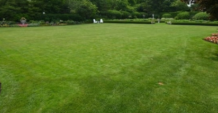By: Scott Eckert, County Extension Agent, Horticulture
Did we have a fall? I am ready for spring! And ready to plant.
Kale is one of these vegetables that has multi- purpose qualities and can be planted early.
This relative of the cabbage family is used for its crinkled leaves. It can be cooked or used as garnish as a substitute for parsley. It is an excellent source of vitamins A and C. Kale is one of the most cold-hardy vegetables and can withstand very low temperatures while maintaining its
characteristic dark green to purplish color. Vitamin A is great for your vision, your skin as well as helping to prevent lung and oral cavity cancers. High in Vitamin C, Kale is very helpful for your immune system, your metabolism and your hydration. Vitamin C is also helpful to maintain cartilage and join flexibility.
Kale is high in calcium. Per calorie, kale has more calcium than milk, which aids in preventing bone loss, preventing osteoporosis and maintaining a healthy metabolism. Kale is low in calorie, high in fiber and has zero fat. One cup of kale has only 36 calories, 5 grams of fiber and 0 grams of fat. It is great for aiding in digestion and elimination with its great fiber content. It�s also filled with so many nutrients such as vitamins, folate and magnesium.
* Varieties. Common varieties include Dwarf Blue Curled Scotch, Vates, and Dwarf Siberian. Many oriental varieties are available to produce ornamental foliage known as flowering kale.
* When to plant. Kale is cold tolerant and can be planted in early to mid-March for a spring crop or in early August for a fall crop.
* Spacing. Plant seeds �-� inch deep and thin seedlings to a plant every 8-12 inches in the row. Rows can be up to 15 inches apart.
* Harvesting. Pick older, lower leaves when they are full sized and tender. Cold weather improves the flavor. Kale can be left in the garden and used until a severe freeze damages the crop, usually in early December.
Common concerns
You will want to watch kale growing in your garden for aphid. Aphids can be controlled with insecticidal soap, horticultural oil and permethrin, etc. Remember to read and follow label directions for use.




